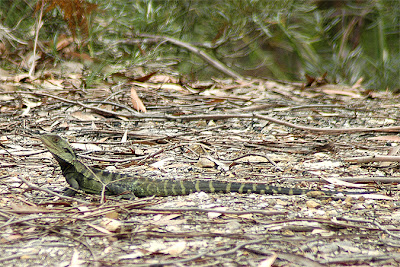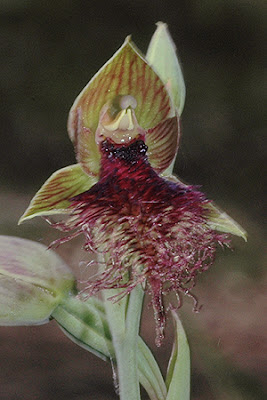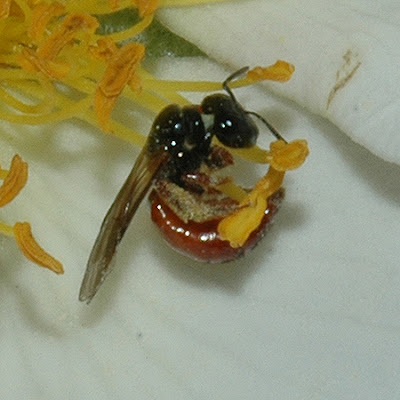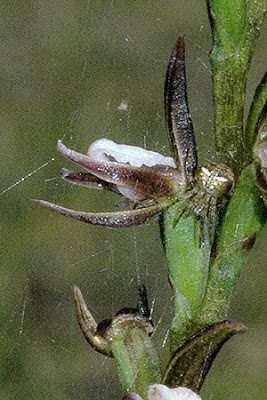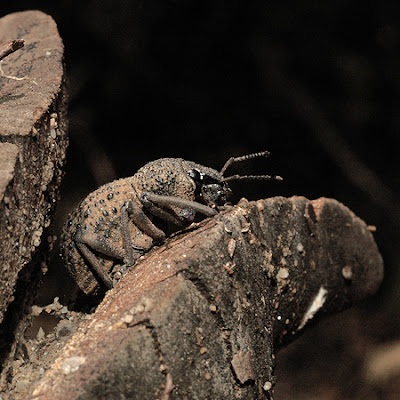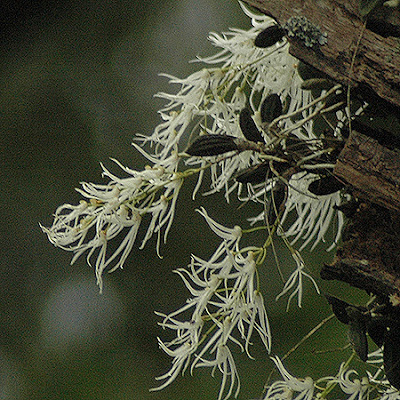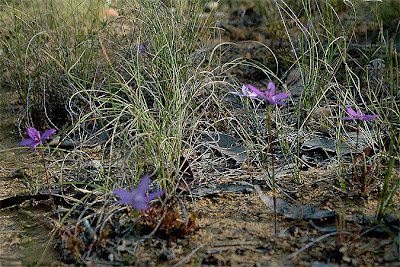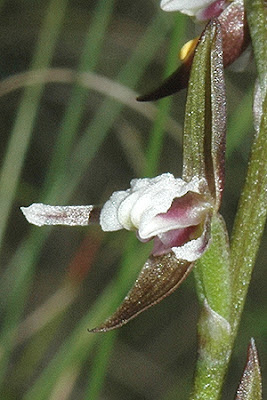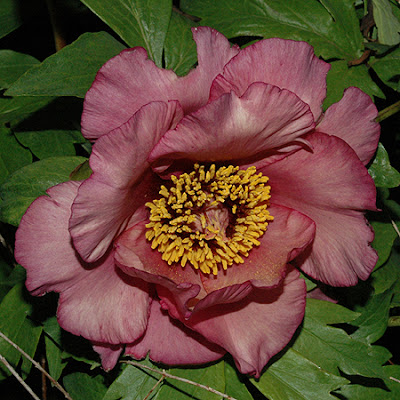The trees in Nova Scotia are colouring up, and Leo's Peonies will be shutting down, with the Peony leaves dying off, and the tubers going into dormancy. Soon they will be covered by their first fall of snow, and then they will have a near-permanent cover of snow (for a few months at least). So, the world in which Leo and his plants live is a world of extremes.
But seasonal changes bring about such wonderful colours. This was obviously a late afternoon shot (as Leo was returning home, after a long bike ride). You can see the oncoming car has its headlights on. I have warned Leo that the cars there drive on the wrong side of the road!!!
 Leo told me that in this photo (below) of trees, with a field in the foreground, the field had been ploughed recently. The field was full of birds, ranging from crows to finches. When he pulled his bike back onto the road, he "flushed a couple of irate pheasants from the roughage beside the road". Its nice to learn that the birds are doing well in Nova Scotia. There is some hope for the world, if the birds are healthy.
Leo told me that in this photo (below) of trees, with a field in the foreground, the field had been ploughed recently. The field was full of birds, ranging from crows to finches. When he pulled his bike back onto the road, he "flushed a couple of irate pheasants from the roughage beside the road". Its nice to learn that the birds are doing well in Nova Scotia. There is some hope for the world, if the birds are healthy. Leo described the various trees as follows: "Unfortunately a rain storm on Saturday came with a lot of wind as well, which stripped most of the area's red maples of their leaves. Other maples still had theirs, but moose maple is yellow and sugar maple is orange to yellow (and the orange comes a bit later). Poplars and birch, yellow. Sky, blue. (Thanks Leo, we can work that one out!) Conifers green (larch [locally known as hackmatack, also as tamarac] will go yellow in a while, but not yet)"
Leo described the various trees as follows: "Unfortunately a rain storm on Saturday came with a lot of wind as well, which stripped most of the area's red maples of their leaves. Other maples still had theirs, but moose maple is yellow and sugar maple is orange to yellow (and the orange comes a bit later). Poplars and birch, yellow. Sky, blue. (Thanks Leo, we can work that one out!) Conifers green (larch [locally known as hackmatack, also as tamarac] will go yellow in a while, but not yet)"DJW states: Australian readers may find the names of some North American trees unfamiliar. The Merriam-Webster Online Dictionary gives the etymology of "hackmatack" as: earlier hakmantak, probably from Western Abenaki (Algonquian language of New Hampshire and Vermont). Date: 1792
This is a field of wild Blueberries (Vaccinium sp). According to Leo, the field gets mowed (slashed), but the plants themselves are wild, it seems. One assumes the locals harvest the delicious berries to turn into vitamin-rich drinks, or (my favourite) eaten with double cream. It seems Blueberries are very much a Nova Scotian specialty product. Judging by the tilt on several of the trees on the horizon, it might be a windy area, so I am sure it is not always as idyllic as it seems in this autumn photo.
 Leo followed up his autumn-colour photos with some morning light photos, taken several days later. Here is an early morning shot, taken at 7:33am. (Leo was rung by a fellow cycling enthusiast to get him up and on the road, for a long bike ride - he would have been barely awake, otherwise, I am sure).
Leo followed up his autumn-colour photos with some morning light photos, taken several days later. Here is an early morning shot, taken at 7:33am. (Leo was rung by a fellow cycling enthusiast to get him up and on the road, for a long bike ride - he would have been barely awake, otherwise, I am sure). The second photo is taken about 2 minutes later.
The second photo is taken about 2 minutes later. And then the third photo is taken at 7:37am.
And then the third photo is taken at 7:37am. Already the "first light" effect is passing, and it is starting to pass into a soft morning light. There is now enough light for you to see that the two chairs are very romantically sited, in Leo's front yard, amongst the deciduous trees - hence the carpet of leaves.
Already the "first light" effect is passing, and it is starting to pass into a soft morning light. There is now enough light for you to see that the two chairs are very romantically sited, in Leo's front yard, amongst the deciduous trees - hence the carpet of leaves.It looks lovely Leo.
Please send me the same scene, after the first fall of snow - in a few weeks.












